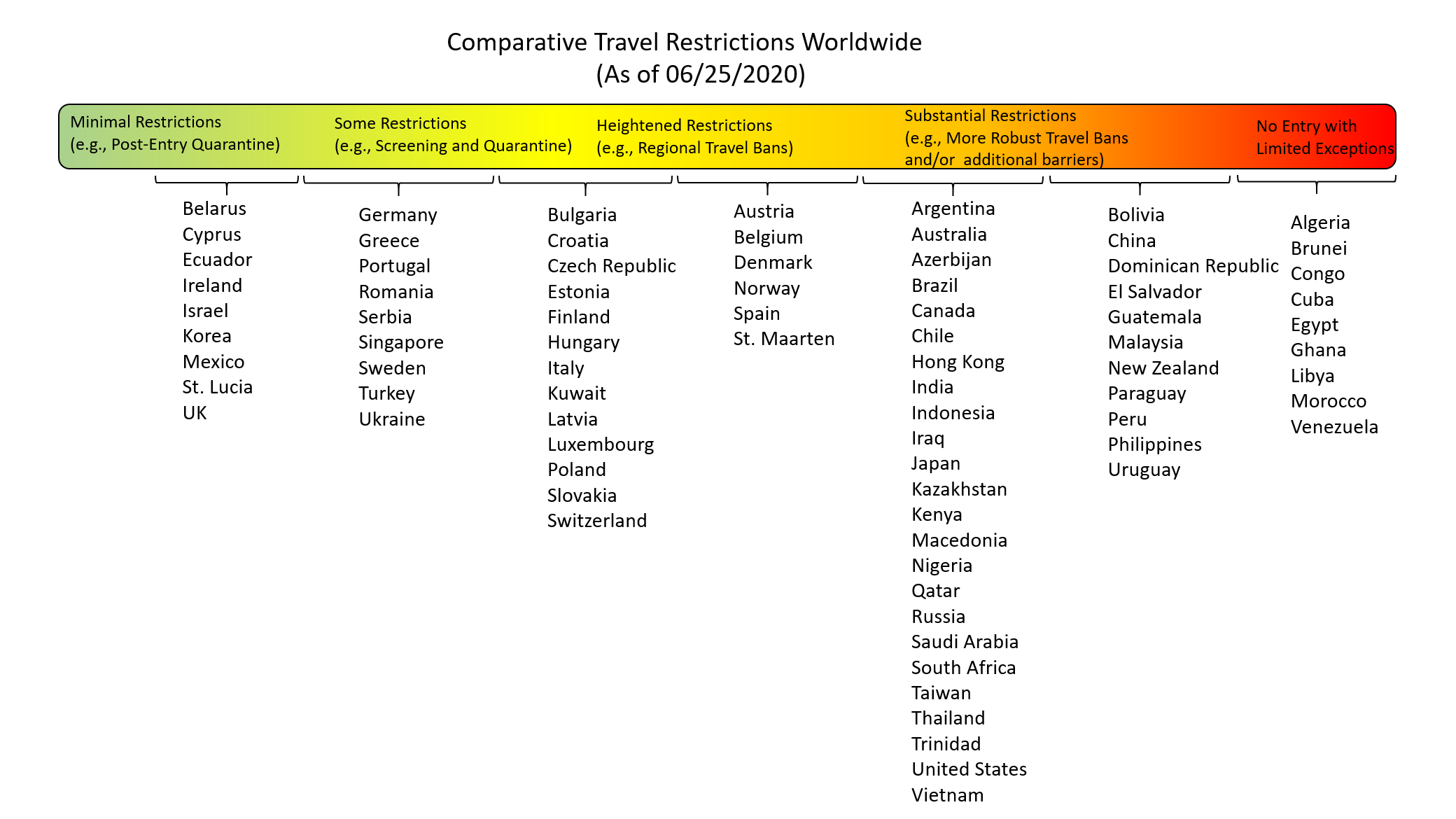Employers in the United States that sponsor foreign nationals for work visas may already be familiar with the various barriers their employees are facing when entering the United States during the COVID-19 pandemic. Such barriers include a June 22, 2020, presidential proclamation suspending entry of individuals on select nonimmigrant visas; an April 22, 2020, presidential proclamation suspending entry of individuals seeking to enter the United States using an immigrant visa; a March 20, 2020, agreement with Canada and Mexico to limit cross-border traffic to “essential travel”; and a series of presidential proclamations suspending entry into the United States for any foreign national who has been physically present in specific geographic regions within a 14-day period preceding entry into the United States, including Brazil, the 26 Schengen Countries, the United Kingdom and Ireland, China, and Iran. In addition to these formal entry restrictions, employers have also faced practical barriers for sponsored foreign national employees, including the ongoing suspension of visa services in most countries worldwide.
In addition to these restrictions affecting U.S. employers that sponsor foreign nationals, employers with multinational operations face an additional layer of complexity in the form of travel restrictions imposed by other countries that affect their international workforce mobility.
Prior to the COVID-19 pandemic, employees frequently engaged in cross-border travel, whether for short-term business travel or temporary expatriate assignments or relocations. To contain the spread of COVID-19, border closures and travel bans and restrictions were implemented nearly everywhere, sometimes extending to a country’s own citizens (e.g., Ecuador, Kazakhstan), leaving people stranded in foreign locations. These measures were largely focused on entry into countries, but some countries closed borders in both directions, prohibiting (or at least limiting to essential business) outbound travel (e.g., Australia, Kazakhstan) and/or by suspending airlines and other cross-border transportation options (e.g., Kenya, United Arab Emirates). Of course, amid such restrictions, there were a few outliers—South Korea and Israel chose not to close their borders from day one.
Recently, countries that closed their borders have slowly started to permit limited entry. For example, on June 30, 2020, the European Union (EU) Council adopted a recommendation to phase-in the lifting of restrictions on non-essential travel into the EU for residents of 15 countries. Nevertheless, even as countries begin to open their borders, some are imposing new restrictions. Japan, for instance, added 18 new countries to its list of restricted countries based on a decision by its national Security Council on June 29, 2020. Similar to some of the U.S. travel restrictions, any traveler who has stayed in a restricted country within the 14 days prior to application for landing will be denied landing into Japan.
Apart from such restrictions based on the containment of COVID-19, some countries are likewise introducing travel restrictions based on reciprocity (i.e., imposing restrictions in response to other countries restricting entry of their citizens.) South Korea, for example, has suspended visa waiver entries indefinitely for nationals of countries that prohibit visa-free entry of South Korea nationals.
Similar to the United States’ restrictions, visa services are being suspended globally, and such measures are utilized as a method of controlling travel and border entry. For example, Singapore has been denying work visa applications that were already under review when immigration agencies were closed due to COVID-19 measures, forcing not only processing delays but employers to reevaluate whether to incur the cost of submitting new applications for new hires and transferees.
Countries that have eased their travel and border restrictions continue to require quarantine upon arrival at existing residences or government facilities (sometimes at the traveler’s expense), and either a health certificate or mandatory COVID-19 testing upon arrival, subject to the country of departure.
The below chart provides an approximate illustration of the relative degrees of travel restrictions across multiple jurisdictions.
The Ogletree Deakins Global Solutions podcast series provides employers with insights into a new challenge each week, providing tips for multinational employers to help them achieve their goals efficiently through an unprecedented volume of new COVID-19–related laws and guidelines worldwide. Stay tuned for our next episode discussing issues employers may face from new border restrictions, including visa limitations, post-entry quarantines, and more.







